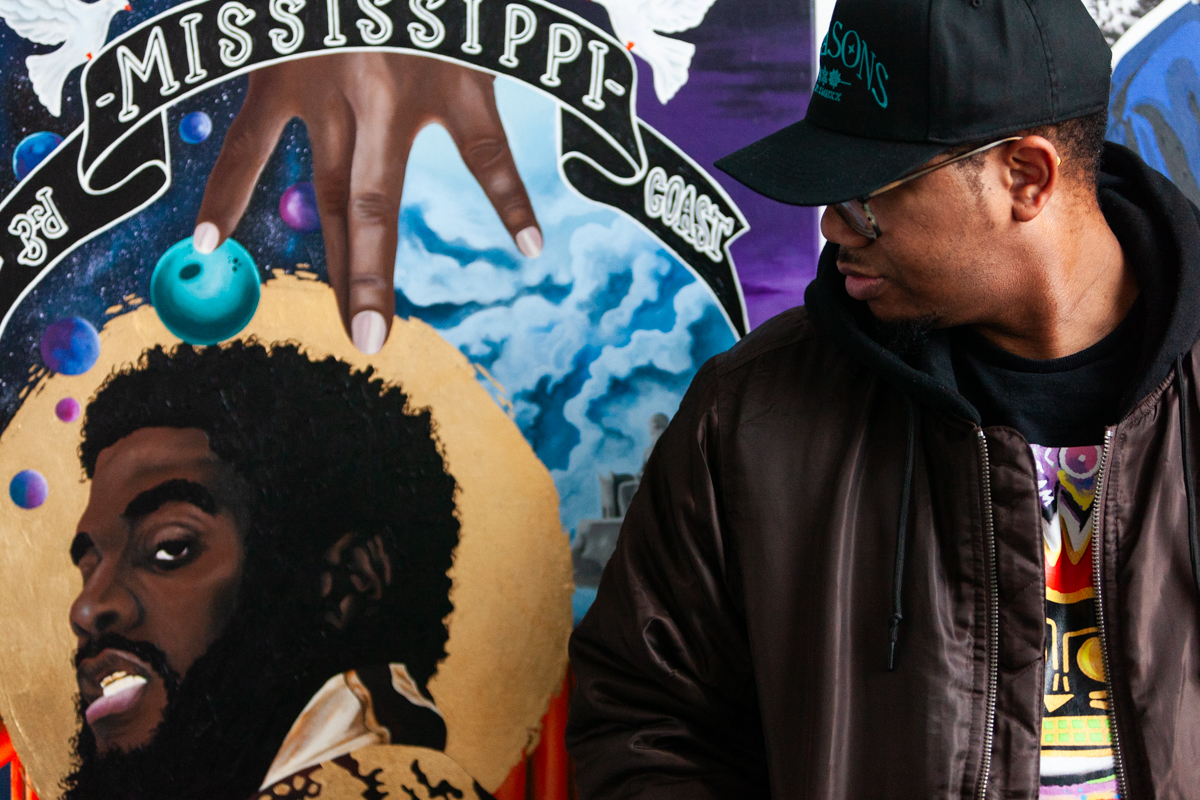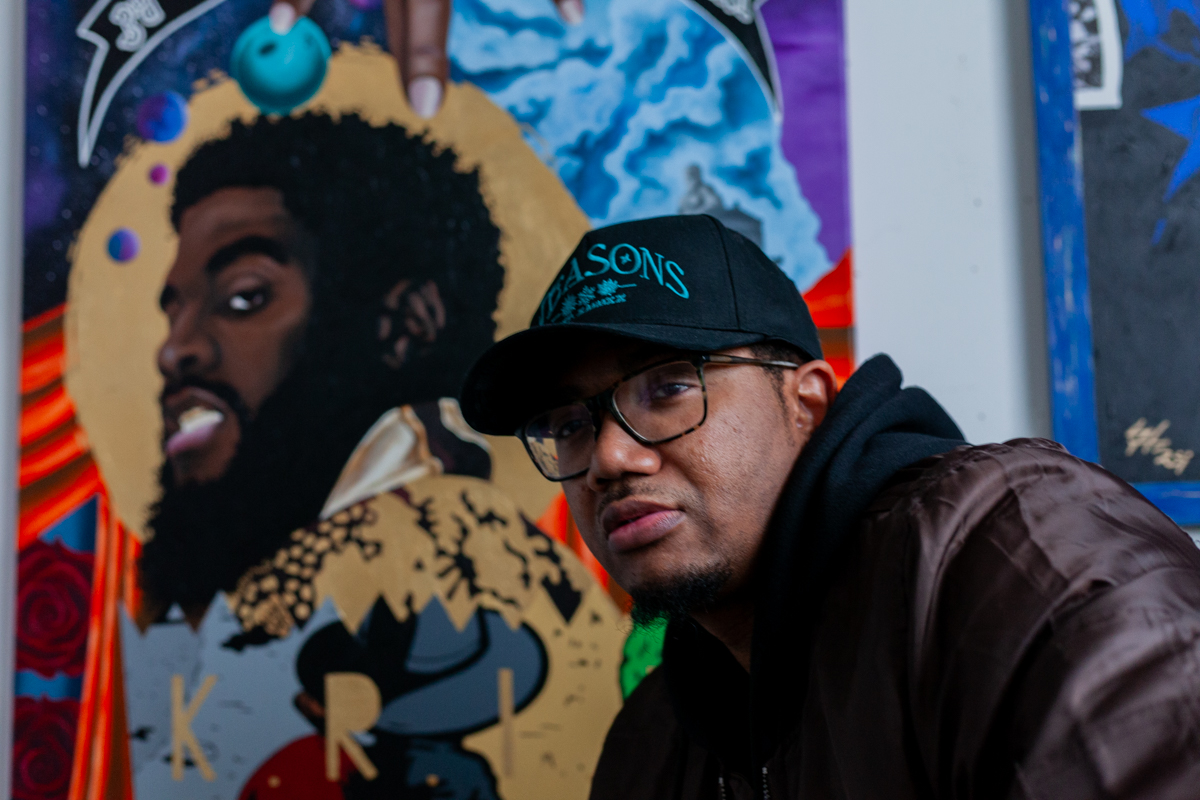Meet Charles Conner, a Teaching Artist and Muralist with Urban ArtWorks. Inspired by Tree to join the program, Charles embraced the challenge of teaching, quickly realizing the impact he could have on young artists. Through his work, he encourages students to express their unique identities, take creative risks, and see their ideas come to life in public art. From guiding youth in the Kirkland MAP cohort to creating a mural for the Paralyzed Veterans of America Charles incorporates powerful storytelling in his work. We sat down with him to learn more about his artwork and perspective.
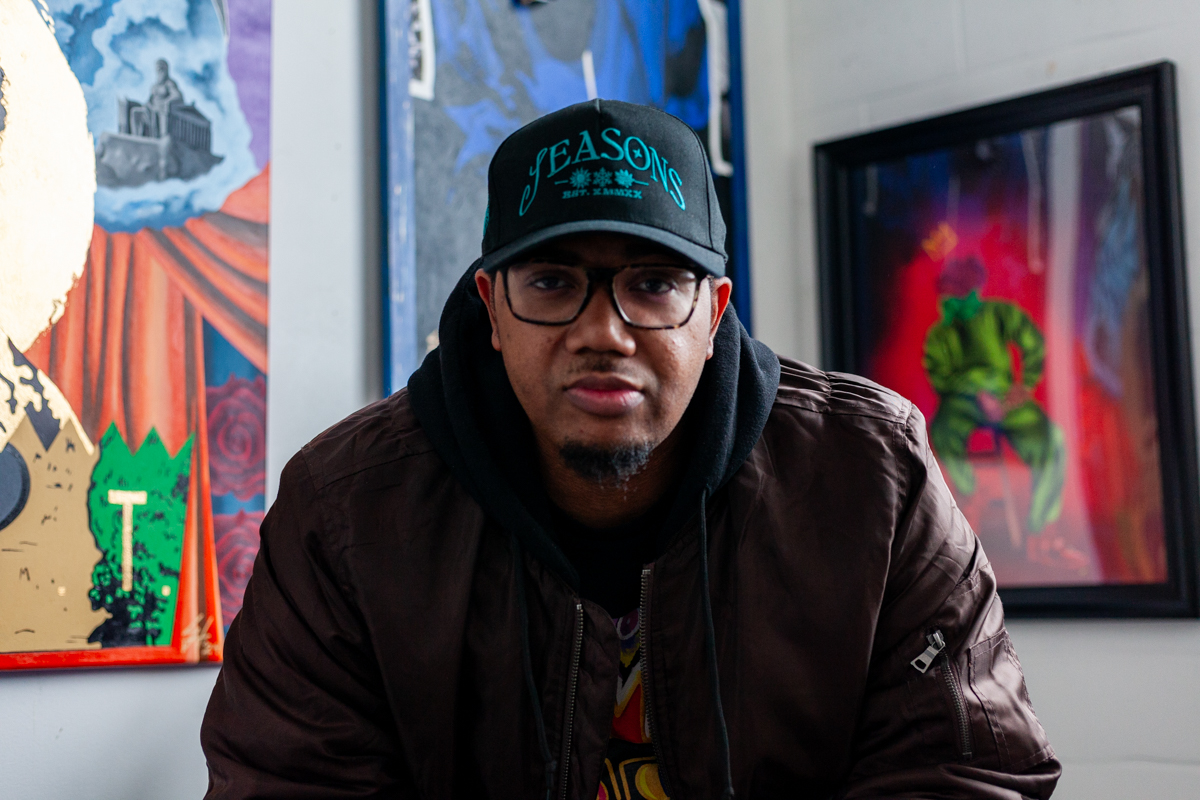
1. How did you first get involved with Urban ArtWorks?
A friend of mine, Tree Williams, was working with Urban Artworks as a teaching artist and told me about the program. I thought right off the bat, I needed to explore and see if I can be a part of it.
I wasn’t sure of the process of even how much experience I need, but I was going to find my way in. All I needed was a shot.
2. Can you share your experience or memorable moment you’ve had working as a teaching artist with Urban ArtWorks?
I remember when I first started with teaching and I didn’t know exactly what to expect but I just kept my optimism. I wasn’t really familiar with teaching a class or even knew what needed to be done to set up a whole entire curriculum. I think for me once I actually got into the classroom and met with the other teaching artist, being in the actual space of the classroom, I started to loosen up a bit more and feel more comfortable as well. I think being able to meet with all the students learn about them and what their skills were like, let me know that I had something to offer and I could help them take what they did know and bring it to a new level and also give them something that they didn’t have and add it to their tool belt.
It was a great feeling and experience watching each week as a student came in and learned about what we had going on that week and then watching them collaborate with one another on a subject, task, or project. Even those that were very introverted, you start to see them come out of the shell a bit more because we knew that the project ahead was going to be a challenge that everybody had to have input in. We didn’t want anyone to feel left out. We wanted everybody’s voice to be heard, because for a lot of the students this was their first time really being able to express themselves in an artistic manner, see their ideas put down on paper and also seeing those ideas come together on a project that was going to be for public consumption as well.
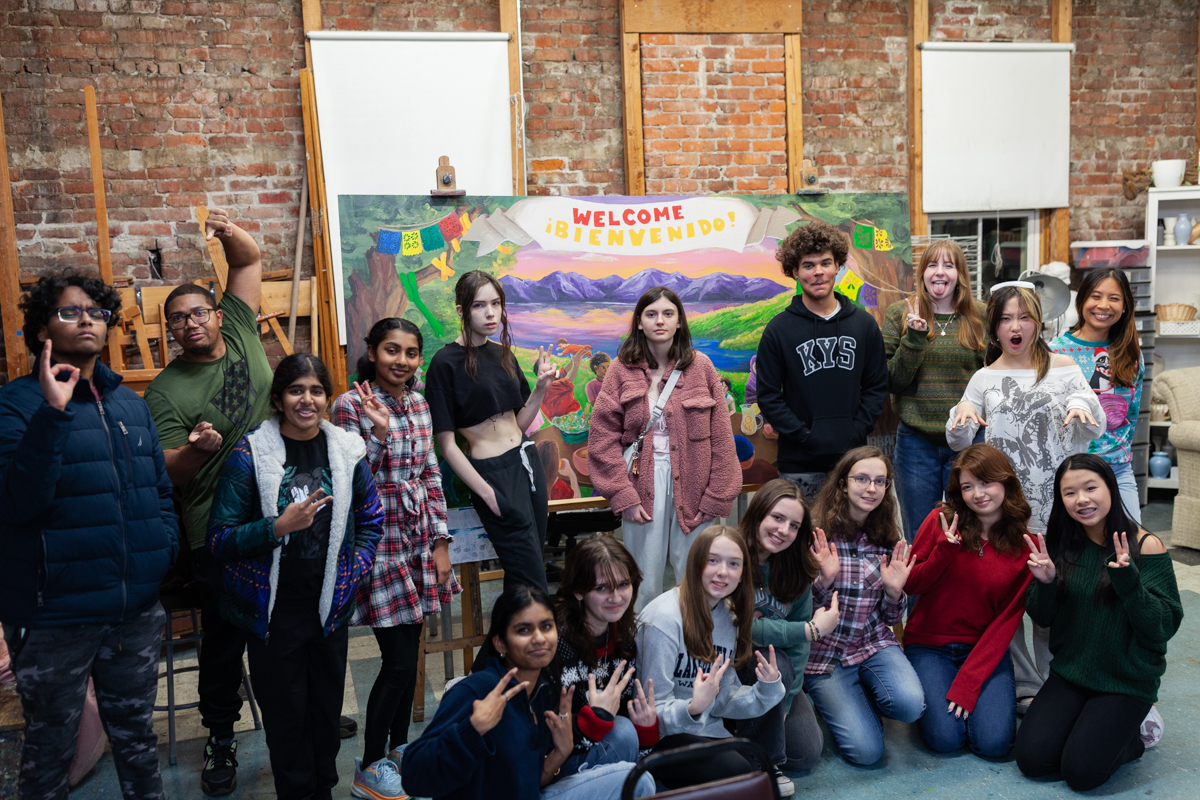
3. What stands out to you about collaborating with youth artists in making a mural for the public?
What stands out to me is the imagination and the freedom in which the youth create. They don’t really tiptoe around when trying to create their ideas and get it out there. They give you fresh eyes as well, so even as much experience as you can have in the art game, they always have a different fresh perspective and it’s always unique.
4. How do you encourage your students to express their own identities and voices through their art?
I encourage them by letting them know it’s okay to think and be different, that you are not going to always be able to please everybody. It’s okay to say no, it’s okay to have your own thoughts & feelings about things. That it’s okay that what you create is NOT for everybody and is not going to always be liked. That’s just totally fine because that’s what makes you who you are, that’s what makes you an individual, and you should lean into that.
5. Members of the Paralyzed Veterans of America (PVA) shared that they saw themselves in the mural. How did you represent the community and their stories as well as incorporate your personal experiences and emotions into the projects or artwork?
I really try to make sure that I pay attention and research the subject that I’m working on because I want to make sure that the client that I’m working for is actually getting what it is that they are seeking.
I like to tell stories within the work, I like to build layers upon layers within the work as well so that way it’s not just something that can be taken at face value. Sometimes you have to rewind and find that there’s more to find and you’ll see that there’s more stories each time you look at a piece that I create. I just always try to approach my work in that fashion.
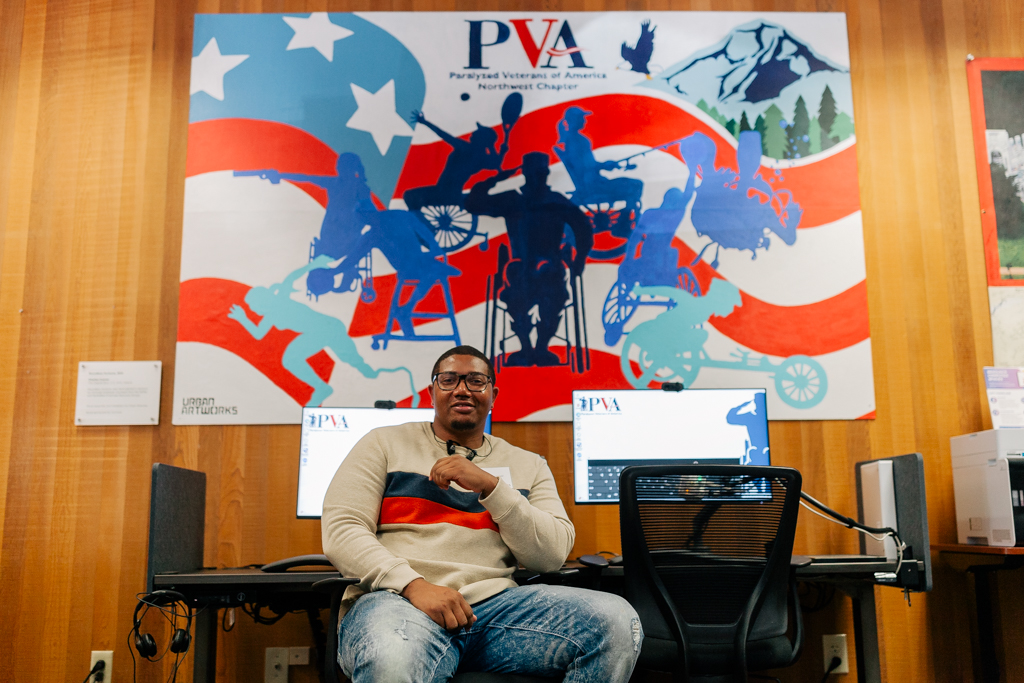
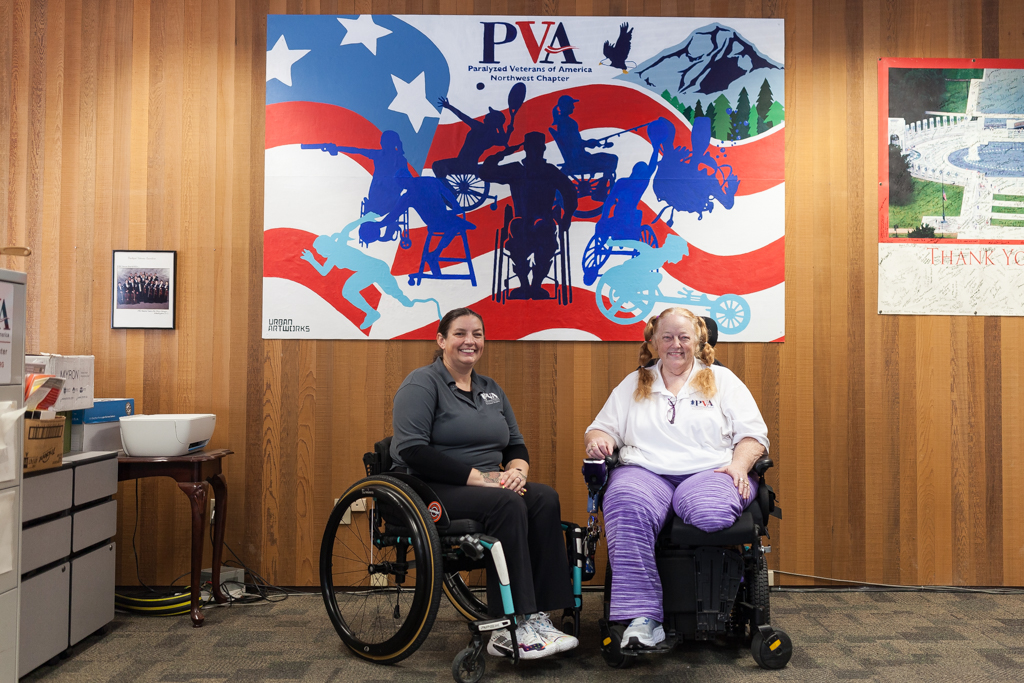
6. Why do you believe public art is important for communities, or how does art function as a medium for social change and raising awareness about important issues?
It’s really a form of public speaking. It’s a way to let others know exactly what it is that you stand for, what’s on your mind, and what you represent as well within a space. Whether that’s for an individual space or for a community space, it allows others to see themselves within it and to know that it’s possible for them to be able to get their own voice out there by means other than written or video.
7. What advice would you give to youth artists who want to pursue art professionally ?
I would say that it is best to have a realistic view of what it is that you are trying to gain from art. It’s not always going to be easy and you’re more than likely going to take more losses than you will get wins, but I can tell you those wins that you get are the best feeling in the world.
Sometimes those wins can be grand, so it’s one of those things where you just want to stick to it and know why you are in it.
Research and try different styles, well your audience, and put yourself out there ie. (markets, popups, art festivals, exhibitions, etc.)
Do it for the love rather than doing it just so you can try to make money because honestly it’s one of the hardest things to stay consistent in and one of the hardest things to make consistent money with.
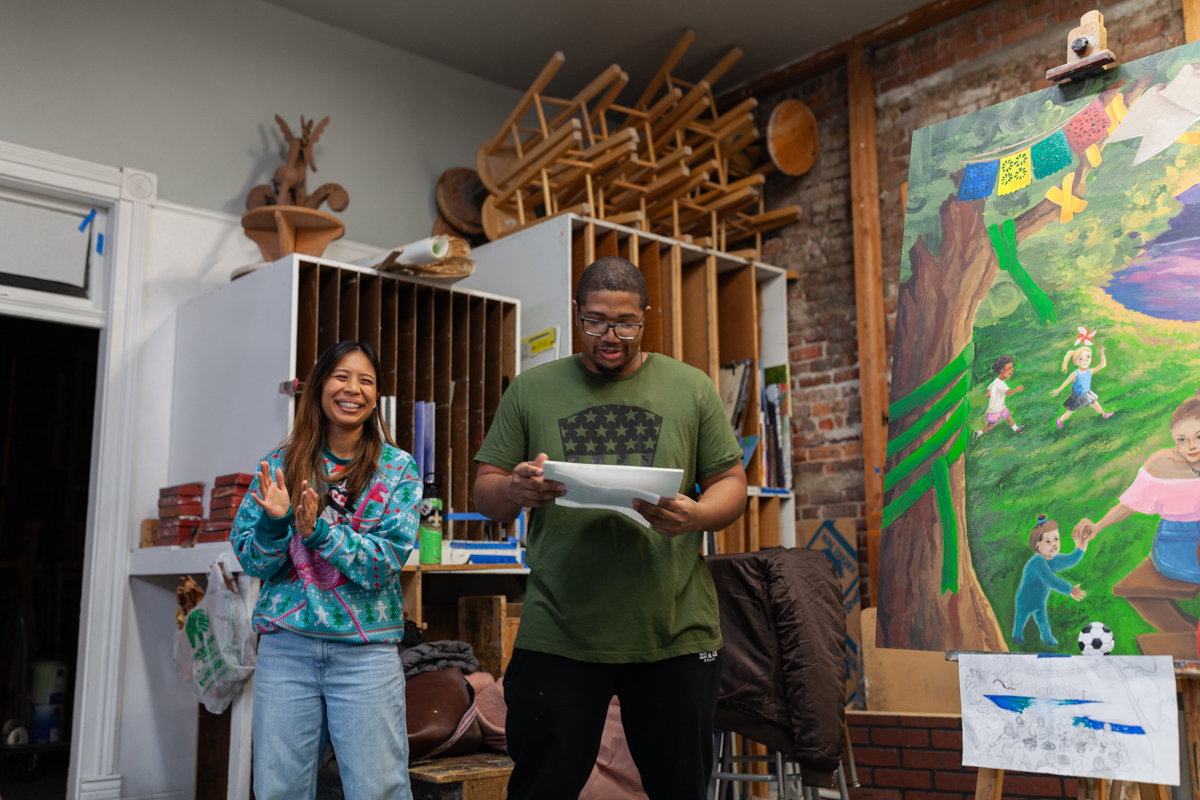
8. Are there any upcoming projects or collaborations you’re particularly excited about?
Currently my work is being exhibited alongside other Black artists at Bainbridge Island Museum of Art in an exhibition called Radiant Reflections. It is a fantastic experience being able to collaborate with them once again and if you have some time hop on a ferry and get over to the museum so you can check it out.
I’m also going to be exhibiting some work at the third annual TCC Black Artist Exhibition at the Tacoma Community College Gallery, so that is going to be starting up soon from February the 10th through March the 7th. Community reception will be on February 21st from 4:00 to 6:00 p.m.
Also on February the 16th I’ll be exhibiting work at this year’s Black Makers and Creators event at the Renton Hyatt at Southport in Renton Washington, so that will be coming up on February the 16th and I’m really excited about that. It’s going to be multifaceted with love music, food, fashion, and an art gallery experience.
9. We are sharing this interview during Black History Month. On your website, you share that your work conveys “a semi realistic interpretation of his surroundings and the African American culture, all from a Black man’s perspective.” Can you share more about how you celebrate Black history and culture through your art?
I try to make sure that I stay true to my art and my creativity. I don’t try to make things that I feel that is going to just sell necessarily but rather what I feel is in the best interest of getting my message across. Now whether that’s me creating something abstract or me creating something that has a direct message that I’m trying to convey. I always want to make sure that it’s my message, my thought process, and not something that I’m trying to use to pander towards a particular group, person or organization.
It will continue to be what I feel, what I think rather than what I hope someone else is going to like.
